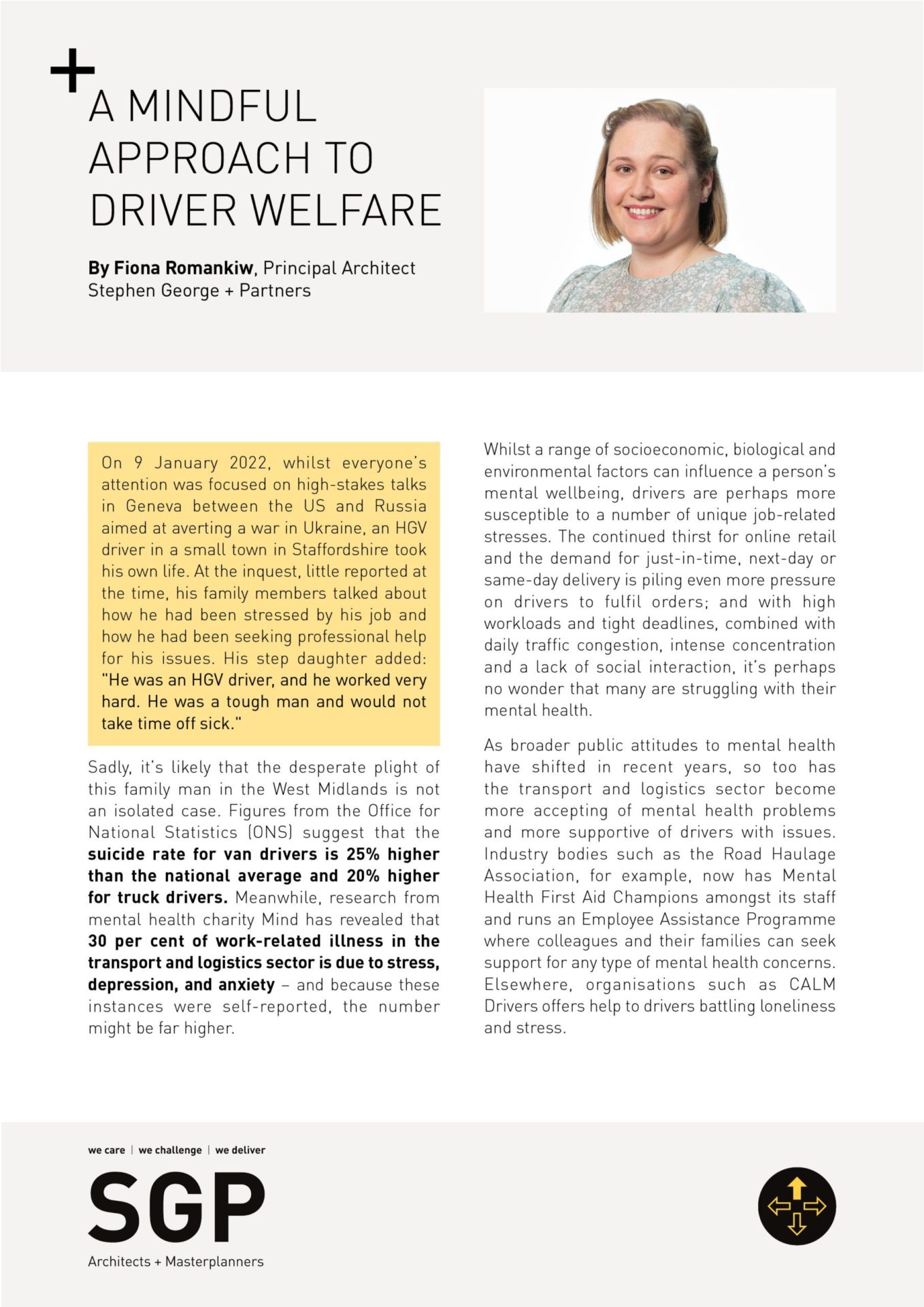A mindful approach to driver welfare

Driver welfare is a key issue for the transport and logistics sector, ensuring the safe operation of the network. It’s also in society’s interests that the driver profession be respected and that their status as essential workers be reflected in the spaces and facilities we provide for them.
Whilst mental health is something that concerns everyone, professional drivers are perhaps more susceptible to a number of unique job-related stresses brought about by high workloads and tight deadlines, long, solitary journeys and dealing with daily traffic congestion. Research from mental health charity Mind has revealed that 30 percent of work-related illness in the transport and logistics sector is due to stress, depression, and anxiety.
As broader public attitudes to mental health have shifted in recent years, so too has the transport and logistics sector become more accepting of mental health problems and more supportive of drivers’ mental wellbeing. Whilst we’ve seen a step change in management and operational procedures, Fiona Romankiw, Principal Architect at Stephen George + Partners, argues that measures also need to consider the inclusion of better facilities for drivers.
In this latest opinion piece, Fiona looks at how, with thought and good design, providing well-considered spaces and facilities for drivers within warehouse and logistics facilities can be achieved with minimum cost but with maximum impact.
Click here to download the full article: A mindful approach to driver welfare by Fiona Romankiw
- X
- Share on LinkedIn
- Copy link Copied to clipboard
Read more from…
Work completes on transformation of railway arches in a key regeneration area in Greater Manchester
New extension for UK’s leading food wholesalers and suppliers
Start on Site for latest unit at Panattoni Park Sittingbourne
No related items found.
No related items found.